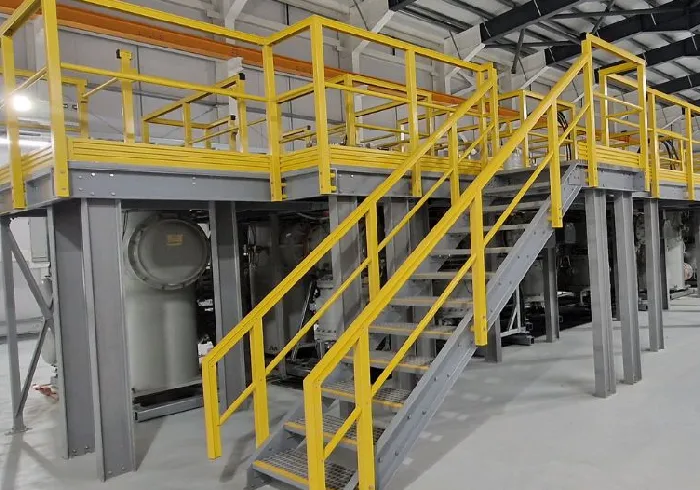loading...
- No. 9, Xingyuan South Street, Dongwaihuan Road, Zaoqiang County, Hengshui, Hebei, China
- admin@zjcomposites.com
- +86 15097380338
- Welcome to visit our website!
Composite Material Gratings for Enhanced Performance in Various Applications
Understanding FRP Platform Grating Applications and Benefits
FRP (Fiberglass Reinforced Plastic) platform grating is a revolutionary material that has transformed the construction and industrial sectors by offering lightweight, durable, and corrosion-resistant alternatives to traditional metal and wooden grating systems. This innovative product has gained significant traction in various applications due to its unique properties and advantages.
What is FRP Grating?
FRP grating is made by embedding fiberglass strands in a resin matrix to create a composite material that exhibits outstanding tensile strength and reliability. The grating is fabricated in various styles, including molded and pultruded types, providing versatility for different applications and settings. The manufacturing process involves combining high-quality fiberglass with thermosetting resins, which are cured to form a solid, robust structure.
Key Advantages of FRP Grating
1. Corrosion Resistance One of the most significant benefits of FRP grating is its resistance to corrosive environments. Unlike traditional metal gratings, FRP does not rust or corrode, making it an ideal choice for industries dealing with chemicals, seawater, and other harsh conditions. This property extends the lifespan of the grating, reducing maintenance costs and downtime.
2. Lightweight FRP grating is considerably lighter than metal alternatives, making it easier to handle and install. The lightweight nature reduces the structural load, allowing for less robust support systems and overall construction cost savings.
3. High Load-Bearing Capacity Despite its lightweight composition, FRP grating can support significant loads. This feature makes it suitable for use in industrial facilities, walkways, and platforms, where heavy equipment may be in use.
frp platform grating

4. Slip Resistance Safety is a paramount concern in any industrial setting. FRP grating typically features a textured surface that provides excellent slip resistance, which minimizes the risk of accidents in areas exposed to moisture or spills.
5. Low Thermal Conductivity FRP materials offer low thermal conductivity, making grating systems comfortable for users even in extreme temperature conditions. This is particularly beneficial in areas where personnel may traverse hot or cold surfaces frequently.
Applications of FRP Grating
The versatility of FRP grating allows for a wide range of applications across different sectors. Common uses include
- Industrial Flooring Suitable for chemical plants, wastewater treatment facilities, and manufacturing plants due to its corrosion resistance and load-bearing capabilities. - Walkways and Platforms Ideal for pedestrian walkways in outdoor settings, such as parks and recreation areas, where rust and corrosion could be problematic. - Marine Applications Used in docks and piers, FRP grating withstands the harsh marine environment, providing longevity and safety. - Bridge Construction The lightweight nature of FRP grating reduces the overall load on bridge structures, enhancing safety and structural integrity.
Conclusion
In conclusion, FRP platform grating represents a significant advancement in material engineering, delivering exceptional performance in challenging environments. Its unique combination of lightweight, strength, slip resistance, and corrosion resistance makes it a preferred choice in various industrial sectors. As industries continue to seek innovative solutions to enhance safety and efficiency, the adoption of FRP grating is likely to increase, making it an integral component of modern construction and infrastructure projects. The transition from traditional materials to FRP will not only improve performance but also contribute to sustainable and cost-effective solutions in the long run.
-
The Rise of FRP Profiles: Strong, Lightweight, and Built to LastNewsJul.14,2025
-
SMC Panel Tanks: A Modern Water Storage Solution for All EnvironmentsNewsJul.14,2025
-
GRP Grating: A Modern Solution for Safe and Durable Access SystemsNewsJul.14,2025
-
Galvanized Steel Water Tanks: Durable, Reliable, and Ready for UseNewsJul.14,2025
-
FRP Mini Mesh Grating: The Safer, Smarter Flooring SolutionNewsJul.14,2025
-
Exploring FRP Vessels: Durable Solutions for Modern Fluid HandlingNewsJul.14,2025
-
GRP Structures: The Future of Lightweight, High-Performance EngineeringNewsJun.20,2025
